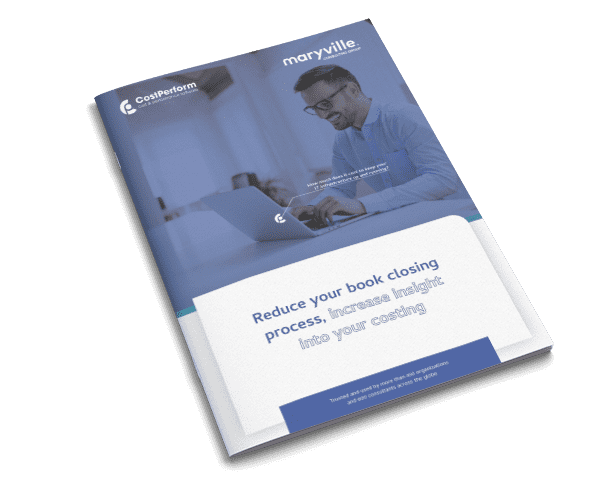(Longread) Cost management expert Gary Cokins explains in this blog what accountants and cowboys have in common. Yeehaw!
Do you recognize any of these names of cowboys in the USA from the 1800s? Billy the Kid, Bat Masterson, Jesse James, Wild Bill Hickok, Wyatt Earp, Buffalo Bill, Annie Oakley, Kit Carson, and Calamity Jane. And do you recognize any of these actors who were cowboys in movies? John Wayne, Roy Rogers, Gene Autrey, Clint Eastwood, James Stewart, Kirk Douglas, James Arness, Tom Mix, and Ward Bond.
What do they all have in common? They were or performed as American cowboys of the Wild, Wild West. Many of them were dangerous.
Cowboy accountants
But today we have cowboy accountants. And they can also be dangerous – dangerous to the users – executives, managers, and employees – who rely on their accountants to provide them financial information for insights and to make good decisions. In place of guns in their belt holsters the cowboy accountant may be carrying a smartphone. Their rodeo rope that cowboys use to catch running steers may be their audit controls manual. Cowboy accountants also wear well-shined wing-tipped dress shoes as their cowboy boots.
It is because they operate today in a lawless frontier no different than the Wild West of the 1800s.
Gary Cokins, cost management expert
Why am I making light humor of accountants with a metaphor of them as cowboys? It is because they operate today in a lawless frontier no different than the Wild West of the 1800s. To be clear, I am not referring to external financial accounting for government regulatory and statutory reporting but rather to the lawless frontier of internal management accounting used by managers for insights, analysis, and decision making.
To clarify, external financial accounting is for valuation. Examples in manufacturing are for inventories and cost of goods sold. But in contrast, internal management accounting is for creating financial value for shareholders and stakeholders by facilitating better decisions.
No laws, no jail
When accountants get the external financial accounting numbers wrong, then they might go to jail! Think the fraud at Enron in the USA. However, if they get the internal management accounting numbers wrong, they don’t go to jail. So, they can ease up and report what they falsely believe is reasonably accurate information.
But therein is the problem. Some accountants are lazy. The laziness I am referring to is not about working long hours – most accountants do. The laziness I am referring to is where they do only enough work for what is convenient for themselves as opposed to what is good for who they serve – the users of the information who perform analysis and make decisions. So, the accountants typically slack off by applying simplistic cost allocations.
Who is to say what is correct?
A complicating matter in our Wild West of management accounting is there are few if any standards to follow. On the external financial accounting side of compliance and statutory accounting there are many rules, including Generally Accepted Accounting Principles (GAAP) and International Financial Reporting Standards (IFRS). And tax authorities have thousands of rules.
No one can stop the accountants from doing this despite the fact that the result will be flawed and misleading with simultaneous over-costed and under-costed products and standard served-lines.
Gary Cokins, cost management expert
In contrast, management accountants are left to their own devices to define the internal management accounting practices to apply within their own organizations. If they want to allocate indirect and shared expenses (commonly called “overhead”) to product and standard service-line costs like spreading butter across bread based on a single broadly averaged cost allocation factor with no cause-and-effect relationship to the products (e.g., number of units produced, direct labor input hours, sales amount, number of employees, square feet, square meters), then they can.
No one can stop the accountants from doing this despite the fact that the result will be flawed and misleading with simultaneous over-costed and under-costed products and standard served-lines. There is a zero-sum error. It perfectly reconciles but is wrong in the parts. And the costs are typically substantially wrong with over +30% and -30% error from the actual costs. These flawed cost allocations do satisfy the auditors for the external reporting because the costs exactly reconcile with the expenses.
Activity-Based Costing (ABC) resolves this problem
One solution to this problem is to adopt activity-based costing [ABC] principles. ABC traces and assigns the resource expenses into the costs with those cause-and-effect relationships. And, as a bonus, ABC can go trace expenses below the gross profit margin line including distribution channel, marketing, selling, and customer service expense. The result is a profit and loss statement for each customer. Why is this important? It is because customers are the source of financial creation for shareholders and owners. Accountants are stopping halfway by not including those customer-related expenses which arguably are more important than the product and standard service-line costs.
Accounting institute task forces to the rescue
Fortunately, some of the professional accounting institutes are beginning to address this problem. These include the Institute of Management Accountants (IMA), the American Society of CPAs / Chartered Institute of Management Accountants (AICPA/CIMA), and institutes in many countries. They are all increasingly offering courses and webinars on management accounting and in several cases certifications. The days when the only offering from accounting institutes was exclusively for external financial reporting is expanding to internal management accounting.
So, for you cowboy accountants who are operating in the lawless frontier, you may discover there may be a new sheriff in town. You may no longer get away with reporting flawed and misleading information to your users, who are likely making poor decisions with it, and violating cost accounting’s universal principles – especially its causality principle.

About Gary Cokins
Gary Cokins (Cornell University BS IE/OR, 1971; Northwestern University Kellogg MBA 1974) is an internationally recognized expert, speaker, and author in advanced cost management and enterprise performance and risk management systems. He is the founder of Analytics-Based Performance Management LLC, an advisory firm located in Cary, North Carolina. He began his career in industry with a Fortune 100 company in CFO and operations roles. He then worked 15 years in consulting with Deloitte, KPMG, and EDS. From 1997 until recently Gary was a Principal Consultant with SAS.
Gary Cokins, CPIM
gcokins@garycokins.com
http://www.garycokins.com
